From Shawn: This editorial is written by R.D. Sussman. He has been involved with the airline industry for over 20 years and is an active travel consultant and airline analyst. R.D. is also a huge #Avgeek and theme park enthusiast (like myself) and is one of the most passionate and knowledgeable people I know. For months I have been asking him to write an editorial about the new American Airlines and he finally got sick of my pestering. This is part 2 of 2 about the new American. You can view part 1 here.
The third ‘P’ – Planes:
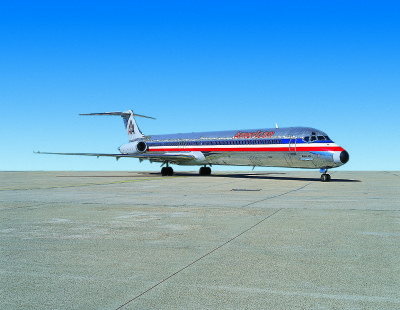
AA has been fighting to keep up for 15 years, but until recent times has not done much to create a good fleet plan. With the arrival of the Airbus 319 as well as 737-800/8MAX aircraft, this is shifting. Currently, the combined carrier’s fleet plan is slowly being adopted. At US, the 767-200 fleet is gone, as are the remaining 737-400s that were the backbone of flying for US for many years. Over at AA, the phaseout and drawdown of their impressive MD-80 fleet has been accelerated, with 2017 being the last year (as of ‘now’) that they will be flying the venerable twinjets.
What the fleet will look like in the near future is an odd blend of both Boeing & Airbus jets for domestic, and a nearly similar blend internationally. AA has chosen the Airbus 319 for short haul & thin transcon flying, the 737-800 for medium haul & denser markets, and the Airbus 321 in two formats for heavy-haul & transcon flying. Eventually, the Airbus 320 fleet will be disposed of, many of these planes are the oldest Airbus 320s flying, dating back to 1989-1993. I would fully expect that the 320s will be gone by 2020, if not sooner, as more 737-800s enter the fleet. The biggest question mark right now is the 757-200 fleet, which is approaching 25 years old. There is currently no direct replacement for this aircraft: The 737-900ER/9MAX does not have a similar capacity to the 757, and the Airbus 321 does not have the range at full capacity to match the needs of the 757s. Parker & Co. have hinted that the Airbus 330-200NEO is a probable replacement for some of the 757 fleet, but there are some markets where this is still too big a plane.
As for longhaul, this is already becoming clear: Thin routes will be the domain of the 787, medium routes of the Airbus 330 & 350 series, and heavy-haul/high traffic of the 777 series. The A330s that American inherited from USAirways have progressively gone through renovations & refurbishments bringing them up to a very good standard over the past few years and are the right plane for many of the post merger routes. Eventually, there will be a need for a high-density longhaul aircraft replacement for the 777s, to this degree the 777-8/9/10 are all perfect fits for many of AA’s high-density routes (London/Heathrow, Tokyo, Shanghai/Beijing & Deep South America.)
AA has their fleet future well in hand – but has some serious and difficult decisions to face in the short & medium term. Unenviable to say the least.
The Fourth ‘P’: Places.
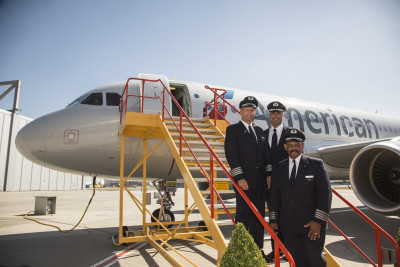
Post-merger American Airlines currently has NINE operable ‘hubs’ across the USA: JFK, PHL, DCA, CLT, MIA, ORD, DFW, PHX & LAX. There is also some heavy-duty off-hub flying via larger focus cities such as BOS & SFO, as well as the Hawaiian markets.
There have been some VERY strong rumors & speculation about the future of the AA network, and some key questions that need to be answered.
The first of this is the Northeast USA debacle. Here, you have three hubs & a focus city within a 350 mile radius of each other, and heavy-duty operations within those corridors. There are many overlapping routes from the two primary international gateways (PHL & JFK) as well as high-density routes to the west coast from all four cities. Interhub flying also adds to the problem and creates both challenges & opportunities to the mix.
PHL most certainly is an important key city and has been since the days of Allegheny Airlines, USAirways forefather. A key hub to US Airways, this was their east-coast international gateway, supplemented by CLT over the past 10 years. However, PHL has been subject to weather & capacity restrictions due to their existing runway configuration, as well as steep competition to the south from BWI (long a Southwest stronghold & ‘very large focus city’) and to the north from EWR (primary international hub for Continental/United).
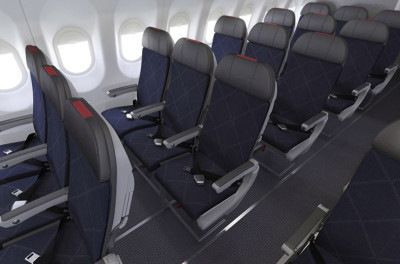
This has artificially kept yields there lower than most other international cities as well as for most domestic flying; indeed, BWI’s proximity to PHL puts it as a competing airport within a 90 minute drive. Now that AA has a hub at JFK & PHL the question is how long will PHL last as an international gateway relegated to flying only a handful of key international routes & destinations. The same can be said of being a true ‘hub’ for AA, with much better yields to the south at DCA, and much better traffic origins to the north at JFK. It is my best prediction that PHL will become like BOS – a focus city for AA, and the removal of a ‘true’ hub status.
To the south, AA has hubs at MIA & CLT. The belief that CLT would be shuttered is a mistake on many sides. First, the hub at CLT serves a critical gateway point in the fast-growing Southeast USA markets, as well as a bridge gateway over nearby ATL. Second, CLT has a large investment & banking community, as well as many large financial institutions. These money powerhouses do a LOT of travel, and do so at high yields. MIA itself is a microcosm of international flying, nearly all of it to South America & Caribbean, long dominant routes of AA. The result is two very complimentary hubs which do two different things: CLT, which is a bypass for the ATL shuffle, and MIA, to go out of the country. Both of these facilities will stand long into the future and beyond.
In the middle of the USA we have the DFW ultra-hub, and the ORD feeder hub. Both of these are key points in the network, both of them feature decent yields, but ORD suffers at the hands of bad mismanagement by AA over the years. Only until recently has AA’s ORD hub been given the attention that it needs and deserves. AA is space constrained there, and hasn’t fully used their gates & opportunities to the fullest. A mish-mash of RJ, mainline & international flying, ORD has been in a battle against neighbors United, and to a lesser extend Delta for the city.
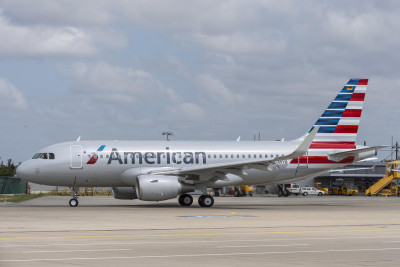
Delta’s growth at ORD has been on primary hub routes, and a strike at AA’s ORD-NYC dominance was successful with the introduction of Delta Shuttle from LGA to ORD. Here, AA has to rebuild, and refocus the hub’s natural position & market: The RJ flying should be upgraded to larger aircraft, and more use of existing space to high-density flying. To try & compete with UA at ORD is a bad decision, rather the focus should be on the best markets they can choose, and dump the smaller non-critical markets. Leaving those smaller markets from ORD means better use of hub space at DFW & CLT as well.
The Western USA: PHX & LAX are separated by a short 350 miles from each other, and are both major markets for population as well as operations for the combined AA. However, AA is extremely restricted at LAX for gate space as well as the four year runway program that will progressively see all four runways shut down one at a time for rebuilding and reworking. PHX itself is going through a modernization program, reducing gates available by 10% while Terminal 3 is completely rebuilt from the ground up, and eventually Terminal 2 is closed.
The biggest rumor has been the shuttering of PHX as a hub by AA in favor of LAX. While this could happen, I don’t see it occurring. Here’s why: LAX has a very high O&D market for AA, whereas PHX sees a decent O&D (origin & destination) traffic, but a HUGE chunk of connecting traffic. In addition, the growth of the tech sector & prime employment in PHX will be a major catalyst to growth of PHX as a larger O&D marketplace. What I do see AA doing is downsizing PHX’s role as a critical connecting hub, and instead putting larger planes into many of the markets they do serve to keep capacity at a peak, and to extend the growth that US Airways (and America West) had prior to now.
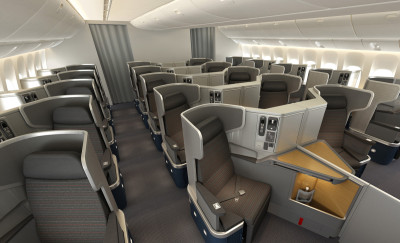
By being able to flow people away from LAX to final destinations, LAX can continue to concentrate on high-yield markets as well as the expansion of international flying that AA has been focusing on in Asia as of late. The two hubs compliment each other nicely, and PHX serves an important point in flowing customers from A to B while avoiding congestion at DFW, and capacity restraints at LAX. Long-term, AA’s hub here should focus on developing PHX as a better alternative for connecting traffic to both DFW & LAX, and use the growing O&D market to gain traffic and yield.
AA has some healthy network abilities, but needs to refocus & rethink a lot of their previous strategy into using their existing facilities to their fullest. There will be casualties in this, but there is a huge opportunity for organic & strong growth for the future.
All in all, AA is slowly moving towards a position they once had in the USA for being a network carrier with a decent reputation. There is a LOT of room for improvement as well as for upgrading the experience a great deal. If AA makes these changes, upgrades the product and can instill a sense of worth & reliability to a tarnished brand, there is no reason they cannot succeed & grow steadily without difficulty. It is up to Doug Parker & his team at AA to make this happen.
I want to sincerely thank R.D. for taking the time to share his expertise and opinion. Hopefully he will decide to come back to do it again!




There is some risk for PHL to lose its hub status but I think it’s relatively small. It’s a big city that is some distance to the competing airports you mentioned (more like 2 hrs drive to BWI, not 90 minutes). JFK (also 2 hrs drive, often more in traffic) has quite a few international flights but limited domestic feed. PHL also does a bit better in on-time arrivals and departures than the NYC-area airports.
Looking at the overall stats for PHL over the past three years, it has been a challenging airport for US/AA to maintain good yields on the international market, while still being able to best utilize assets (Planes, gates, etc.) for a price-sensitive market for domestic flying. While they are exclusive on many of their longer-haul routes, the overall feed there is touchy at best, and relies on secondary and third-city feed to add traffic to the international flying. While there will always be a LHR connection, and most likely a FRA flight, some of the other routes are in danger of being pulled for a stronger feed point (TLV, for example) or for better connections (Using CLT to overfly the east, especially from the Southeast/midwest regions). This is a very difficult position for them to be in, particularly with JFK to the north being a powerhouse for international flying & traffic (indeed, it is second only to LAX in that respect) plus with the greater premium yield per passenger out of JFK. Parker & Co. had used PHL as an access point over JFK for years – and even before HP took over US this was the case. Now that they have the resources, space & equipment, the future is even more cloudy for whether PHL can be utilized to their best advantage. At best, it is a bypass from the NYC region’s endless congestion. With the growth of IAD as an international gateway over the past five years, this too is going to put pressure on PHL to perform – or be at risk of losing the hub status.